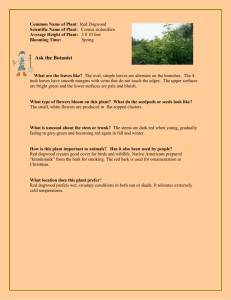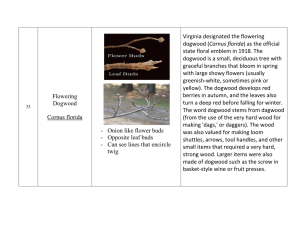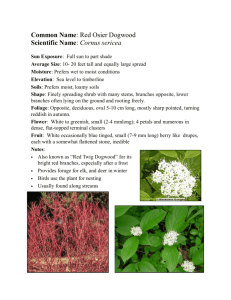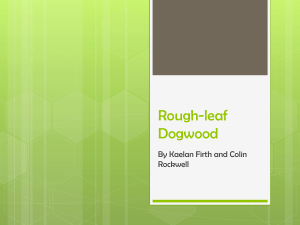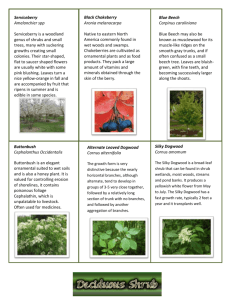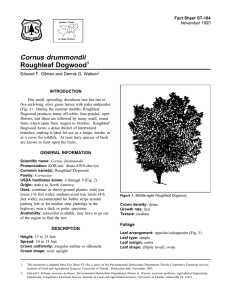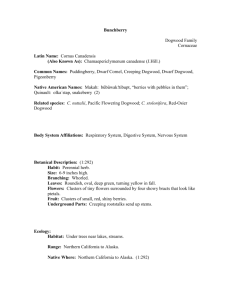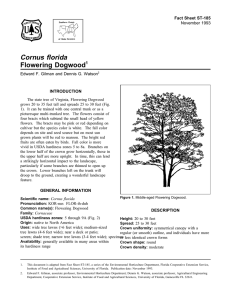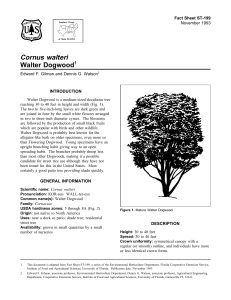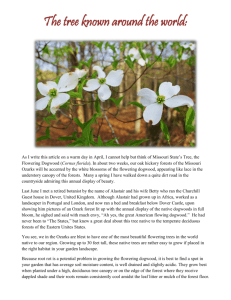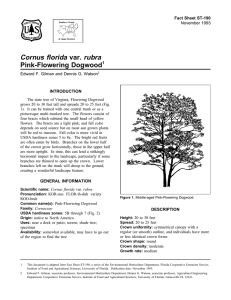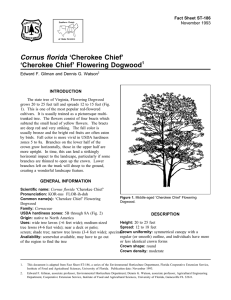Cornus florida L. Flowering dogwood, dogwood.
advertisement
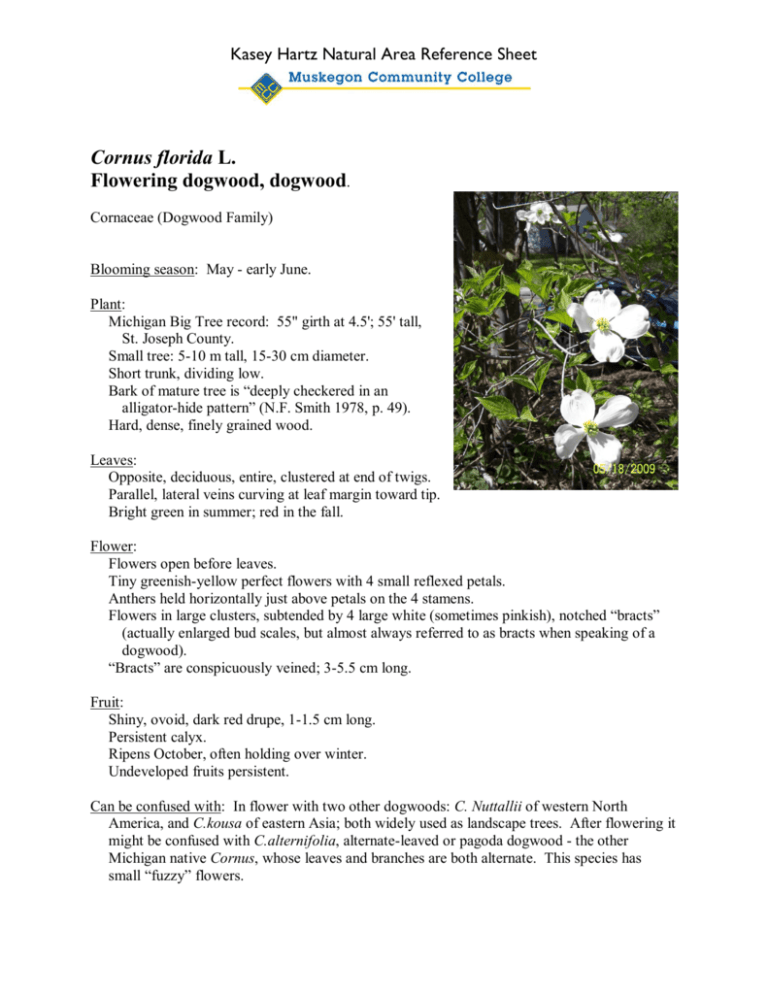
Kasey Hartz Natural Area Reference Sheet Cornus florida L. Flowering dogwood, dogwood. Cornaceae (Dogwood Family) Blooming season: May - early June. Plant: Michigan Big Tree record: 55" girth at 4.5'; 55' tall, St. Joseph County. Small tree: 5-10 m tall, 15-30 cm diameter. Short trunk, dividing low. Bark of mature tree is “deeply checkered in an alligator-hide pattern” (N.F. Smith 1978, p. 49). Hard, dense, finely grained wood. Leaves: Opposite, deciduous, entire, clustered at end of twigs. Parallel, lateral veins curving at leaf margin toward tip. Bright green in summer; red in the fall. Flower: Flowers open before leaves. Tiny greenish-yellow perfect flowers with 4 small reflexed petals. Anthers held horizontally just above petals on the 4 stamens. Flowers in large clusters, subtended by 4 large white (sometimes pinkish), notched “bracts” (actually enlarged bud scales, but almost always referred to as bracts when speaking of a dogwood). “Bracts” are conspicuously veined; 3-5.5 cm long. Fruit: Shiny, ovoid, dark red drupe, 1-1.5 cm long. Persistent calyx. Ripens October, often holding over winter. Undeveloped fruits persistent. Can be confused with: In flower with two other dogwoods: C. Nuttallii of western North America, and C.kousa of eastern Asia; both widely used as landscape trees. After flowering it might be confused with C.alternifolia, alternate-leaved or pagoda dogwood - the other Michigan native Cornus, whose leaves and branches are both alternate. This species has small “fuzzy” flowers. Kasey Hartz Natural Area Reference Sheet Cornus florida L. Flowering dogwood, dogwood 2 Geographic range: Type specimen location: State: Lower third of Lower Peninsula, extending up to Traverse County along Lake Michigan. Regional: Southern Ontario, Maine, then south to Florida, Texas, and west to Kansas. Habitat: Local: Upland, particularly on the edges. Regional: Dry to rich deciduous woods, preferring hillsides. Understory tree, frequently with oak. Intolerant of flooding. Common local companions: Oaks, sugar maples, and beech. Usages: Human: Native Americans used the bark: as a febrifuge, including for malaria (also used flowers in an infusion for same); a vermifuge for children; for headaches and diarrhea; an astringent for poultices; an antiseptic; and to prepare a black dye. The roots were used in a tonic. It was also an “indicator species” for some native Americans: when it flowered, it was time to plant corn. Other parts of the plant were used to make a scarlet pigment; twigs were used for a dentifrice or toothbrush. European Americans also used it for many of these same purposes and to increase action of the heart; it was listed in the USP from 18201894, and in the National Formulary from 1916-1936. The wood was frequently used to make cogs of gears, spoons, various tools, and golf club heads, being both very hard and very tough. Other animal: The fruit is a favorite of wild turkeys, and also eaten by other birds, squirrels, other small mammals, and deer. Such eating is useful to the tree, for it results in seeds being spread widely after their trip through the animal’s gut. Why is it called that? Cornus is Latin for horned, likely comparing the hardness of the wood to animal horn. Florida is Latin for flowery. Dogwood is an old name, and the reason for its use as a name is difficult to determine; one authority suggests that it is because the freshly cut wood smells like dog feces. Prepared by: Barbara Lukacs Grob April 2008
